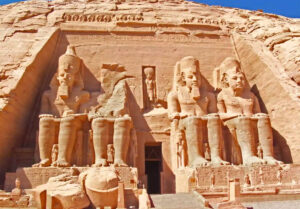The Late Period of Ancient Egypt (c. 664–332 BCE) was a time of both renewed Egyptian nationalism and frequent foreign rule. It followed the Third Intermediate Period and was the final phase of native pharaonic rule before the conquests of Alexander the Great.
Rulers and Dynasties
The Late Period consists of several dynasties, each with a unique story of independence, conquest, and resistance.
-
26th Dynasty (Saite Period): This dynasty, founded by Psamtik I, began when he unified Egypt after the Assyrians withdrew. The Saite kings brought a period of peace and prosperity, reviving ancient Egyptian art and monumental construction projects, often inspired by the Old Kingdom. They relied on Greek mercenaries to maintain their power and assert Egyptian military strength.
-
First Achaemenid (Persian) Period: The Persians, under Cambyses II, conquered Egypt in 525 BCE, ending the Saite dynasty. This period of Persian rule is 27th Dynasty. While some rulers, like Darius I, showed respect for Egyptian traditions, others were less tolerant.
-
Independent Dynasties (28th–30th Dynasties): Following a period of rebellion, Egypt regained its independence for a brief time. The 29th Dynasty successfully defended against Persian invasions, and the 30th Dynasty, founded by Nectanebo I, saw a resurgence of monumental building and art. This was the last time native Egyptians ruled their country.
-
Second Achaemenid (Persian) Period: The Persians re-conquered Egypt, though their rule was brief and harsh.
Defining Characteristics
The Late Period is a distinctive blend of tradition and new influences.
-
Art and Architecture: Art from this period consciously emulated the styles of the Old Kingdom, reflecting a desire to reconnect with a glorious past. However, there was also a new sense of realism and a greater freedom of expression for artists.
-
Foreign Influence and Mercenaries: The pharaohs increasingly relied on foreign mercenaries, particularly Greeks, to bolster their armies. This led to the establishment of Greek trading settlements like Naukratis in the Delta, which acted as conduits for cultural exchange.
-
Decline and the End of Native Rule: Despite periods of independence and prosperity, Egypt’s long-term decline was evident. The defeat of the last native pharaoh, Nectanebo II, by the Persians and the subsequent conquest by Alexander the Great in 332 BCE ultimately brought an end to this era and the beginning of Hellenistic rule.
Check the weather in Egypt and contact us for your Egypt Tours.











